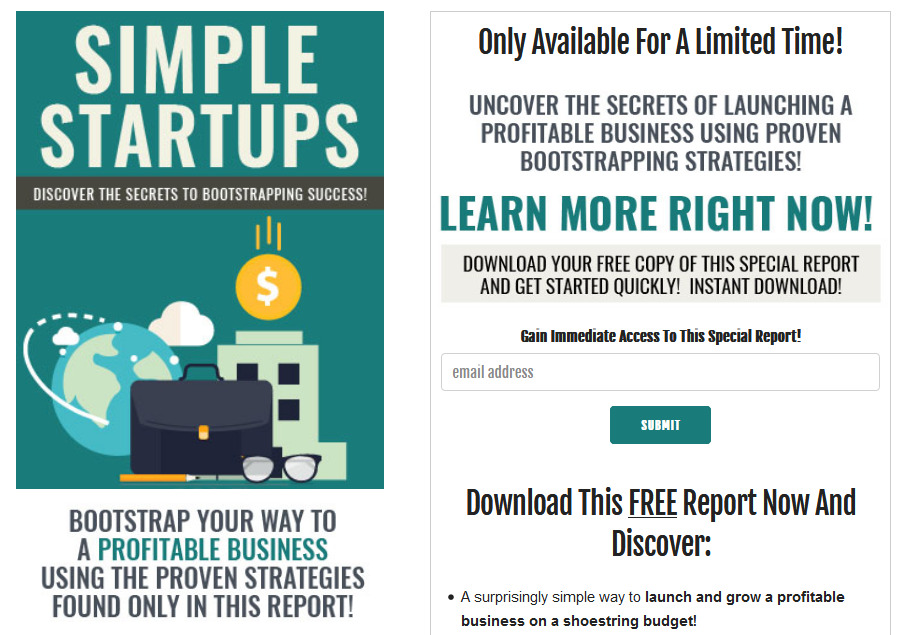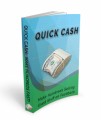Salespage Snapshot

Table of Contents
Table of Contents 3
Introduction 5
Setting a Budget 7
Sticking to Your Budget 11
Using Credit 11
Keep An Eye On Cash Flow 13
Saving Money 15
Reach Profitability Quickly 18
Hiring vs. Outsourcing 19
Obtaining Capital 21
Angel Investors 22
Venture Capital 22
Loans 23
Conclusion 25
Resources 26
Sample Content Preview
Setting a Budget
According to a 2009 survey by the Ewing Marion Kauffman Foundation, the average startup cost for a business was around $30,000. It might be a bit higher now, given inflation, but you can expect the average is still somewhere in that ballpark.
Of course, startup costs can vary dramatically depending on the type of business you’re trying to start.
Opening a retail business or a restaurant, for example, might cost a minimum of $50,000 or more, because you have to pay for the physical space, fixtures, product, licensing, employee salaries, and more.
But starting an online business focusing on digital products, affiliate marketing, drop shipping, or something similar might require as little as $25 to start. This is one big reason so many people start these types of businesses. There’s a lower barrier to entry.
Even $25 can be a significant investment for some people. If you’re already living on next to nothing, even such a small amount can seem like a fortune, especially when it comes to risking it with a potential for failure.
But entrepreneurs know that there’s no reward without risk, and only you know how much risk you’re willing to take.
So, the first thing you need to do (after you make the major decisions regarding the type of business you want to create and such) is figure out exactly how much you’re prepared to spend starting your business.
A lot of this will probably depend on how much you have to spend. If you don’t have very deep pockets, and most of us don’t, you will be limited in the amount of money you have available to start your business.
Some people don’t mind risk, and they’re willing to put more of their available funds into their business in order to try to extract profit more quickly. Others prefer to risk a bit less and grow more slowly. Either way is fine. It’s up to you to decide how much risk you’re willing to take.
This is why it’s important to set a budget and stick to it as much as you possibly can. If you have $20,000 in your savings account and you’re willing to risk half, then you need to set a budget that falls within the $10,000 you have available.
If you have no money available, and you’re starting with nothing, budgeting becomes even more important. You’ll have to find money somehow, and that’s not easy if you have no experience to prove your ability.
Determine exactly how much money you have to invest, and how much you’re willing to risk. Then sit down and total up every single expense you can possibly think of with regards to opening your business.
Don’t forget things such as:
Product (either buying or developing it)
Location (either a physical location or a website)
Marketing expenses
Employees or outsourcing expenses
Office supplies and utilities
Six to twelve months of operating capital
Take note of that last one. Many businesses don’t become profitable for at least the first 6-12 months, so it’s important not only to ensure you have enough capital to start your business initially, but also to run it until it becomes profitable.
Determine how much you are likely to need to run your business until it becomes profitable, and try to pad that number as much as you can in order to account for unexpected expenses.
Once you’ve determined your budget, you can start purchasing the things you need to open your business.
Sticking to Your Budget
Let’s talk about a few things you can do to make sure you stick to your budget once you have developed it. After all, a budget won’t make a difference if you don’t stick to it!
Using Credit
There may be times when using credit is absolutely necessary, but try not to use it unless you have to. Interest rates vary based on the type of loan/credit and your credit history, and can be as much as 30% or even higher for some types of high-risk loans. This kind of expense can destroy a brand-new company if it’s not managed carefully, so it’s wise to avoid using credit if at all possible.
Other Details- 2 Ebooks (PDF, DOC), 26 Pages
- 7 Part Autoresponder Email Messages (TXT)
- 1 Squeeze Page (HTML)
- Year Released/Circulated: 2018
- File Size: 1,338 KB
License Details:
[YES] Can be sold
[YES] Can be used for personal use
[YES] Can be packaged with other products
[YES] Can modify/change the sales letter
[YES] Can modify/change the main product
[YES] Can modify/change the graphics and ecover
[YES] Can be added into paid membership websites
[YES] Can put your name on the sales letter
[YES] Can be offered as a bonus
[YES] Can be used to build a list
[YES] Can print/publish offline
[YES] Can convey and sell Personal Use Rights
[YES] Can convey and sell Resale Rights
[YES] Can convey and sell Master Resale Rights
[NO] Can be given away for free
[NO] Can be added to free membership websites
[NO] Can convey and sell Private Label Rights














